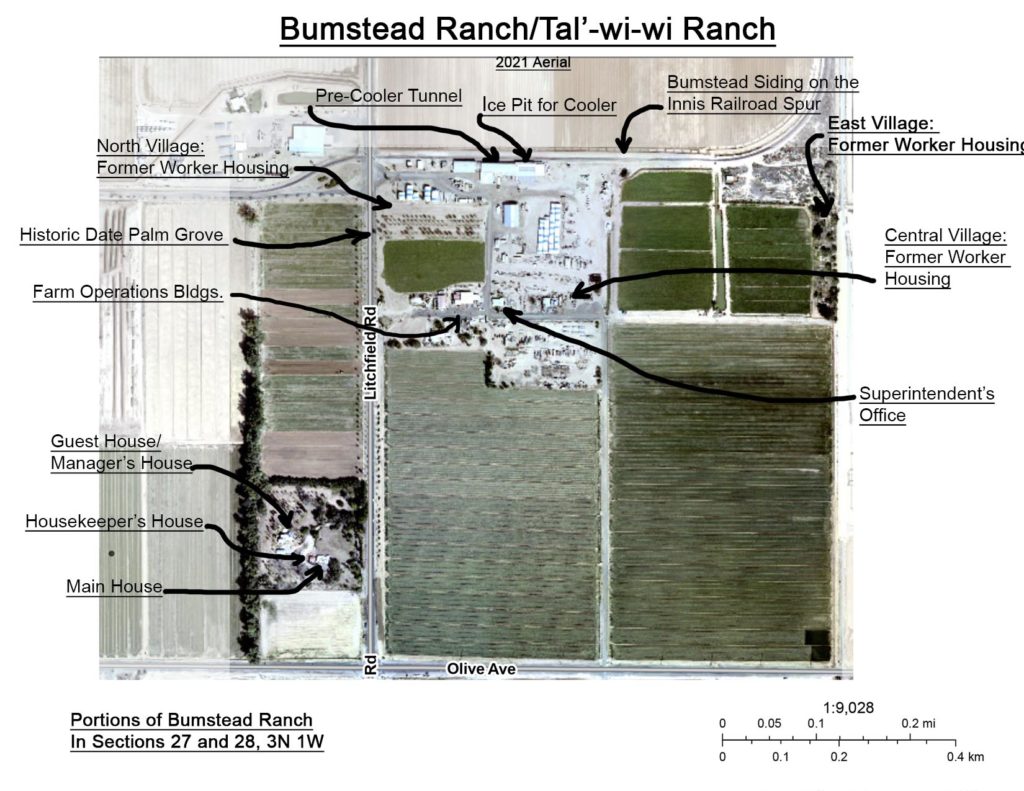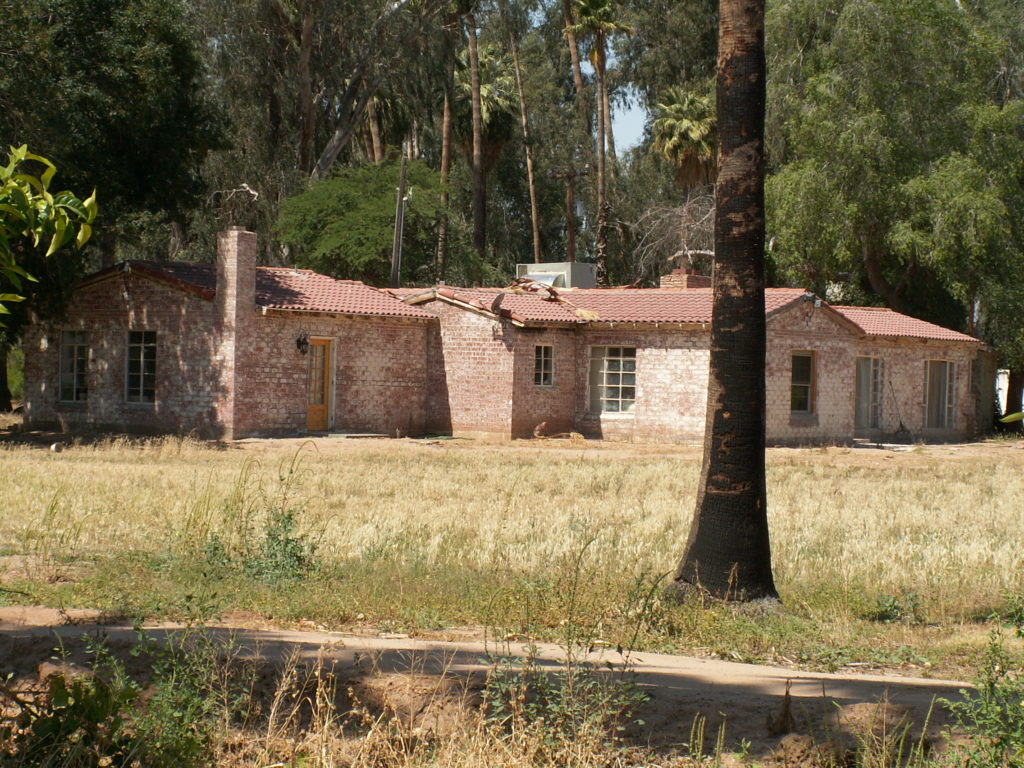
Preservation Projects
Tal'-wi-wi Ranch
cont.
Col. Dale Bumstead brought scientific farming to Arizona in the 1920s. At his death, Col. Dale Bumstead was described as a “Self-Taught Farming Scientist”. Arizona Highways magazine referred to him as a “distinguished agriculturist”.
Bumstead’s farming operation was named Tal’-Wi-Wi Ranch and was centered at Litchfield Road and Olive Road in the west valley. It took Col. Bumstead four years of research before he began planting his first crops. Scores of temperature readings were taken over hundreds of acres. W.T. McGeorge, a prominent Agricultural Chemist and Soil Specialist, was brought in to test the soils for water drainage and soil quality. Water sources and water quality were researched. The land was finally purchased in 1926 and planting began in 1927.
More experts were consulted to select the type and variety of crops suitable to the conditions of the area. Grapes were always a major crop at Tal’-Wi-Wi. Thompson Seedless grapes were the favored variety at first. These grapes matured in our desert before the grapes in California, allowing Bumstead to get premium prices for the crop that was shipped by rail to the eastern markets. A water and soil conservationist, Col. Bumstead choose to grow grapes due to their suitability to our climate and the lower water requirements. Most other crops grown in the area at that time used much more water.
Bumstead chose to dig wells to irrigate his crops. He found the water quality superior to the surface water available from the open ditch irrigation system originating at Lake Pleasant on the Agua Fria River. All water was delivered to Tal’-Wi-Wi fields from underground pipes to reduce loss from seepage and evaporation. The other consideration with the water quality was the low amount of salts in his well water. This would contribute to soil quality over the years of cultivation.
Citrus orchards included grapefruits and oranges. Bumstead worked to increase the citrus crop quality and volume each year. Tal’-Wi-Wi Ranch was noted for its dates and raised two varieties. Bumstead chose dates as another low water use crop that he could get to market before other growers across the country. The grapes, citrus, dates and cattle raised at Tal’-Wi-Wi were selected to provide diversified agriculture. This would reduce risks in the market and distribute income and labor over the year.
Cardinal grapes, developed by Dr. Elmer Snyder at the U.S. Department of Agriculture in California, were made available to growers in 1944. Col. Bumstead made a large commitment to grow these dark purple table grapes in Arizona. This variety was developed to mature early and Bumstead had the jump on major competition from the California growers, who only had planted experimental plots of the new variety. Bumstead’s Cardinal grapes commanded an un-heard of price when they arrived in the east. Due to Bumstead’s gamble he had a two-to-three-year advantage on other growers.
Col. Bumstead led agricultural development in many ways. Bumstead designed and built a cooling tunnel. This 90’ long tunnel was constructed of refrigerator sections made for the military to use in the South Pacific in World War II. With an ice pit and fans to blow air over the ice, produce could be pre-cooled before being loaded onto refrigerated rail cars for shipment. Pre-cooling contributed to the quality of the produce at its destination, an advantage to getting premium prices. With his own packing operation, pre-cooling tunnel and situated on a rail line, Tal’-Wi-Wi workers could have fruit picked, packed, cooled and in a refrigerated rail car in just four hours.
Col. Bumstead reached out to many experts, locally and nationally, to increase the quality and quantity of the harvest, conserve water, improve the soil, and improve methods of production and transportation. Eventually the U. S. government reached out to him. Col. Bumstead had gained a national reputation for modern farming methods. In 1949 the Shah of Iran was a guest of Col. Bumstead to see how his scientific farming methods were used to transform the desert in a short amount of time. The U.S. State Department also brought His Royal Highness Saud Al Saud, the crown prince of Saudi Arabia to Tal’-Wi-Wi to view his methods.
At the time of Bumstead’s death in the summer of 1952, the workers of Tal’-Wi-Wi Ranch were still harvesting the grape crop for that year. Management continued under the direction of General Manager, Kenneth T. McGeorge. Now owned by Col. Bumstead’s son, the farm would continue in operation for many years. The Bumstead family sold Tal’-Wi-Wi Ranch to Robert McKee in 1977 who continued to farm.
The City of Phoenix Aviation Division acquired the property in 2000 for the purpose of protecting the land near Luke Air Force Base from development. The land was leased to farmers and has been under cultivation for almost 100 years, with only three owners.
Data from 1949 shows 23 residences on the site. The residences were divided into three villages. The 40 acres of recreation areas and roads included a large pond that was open to all area residents.
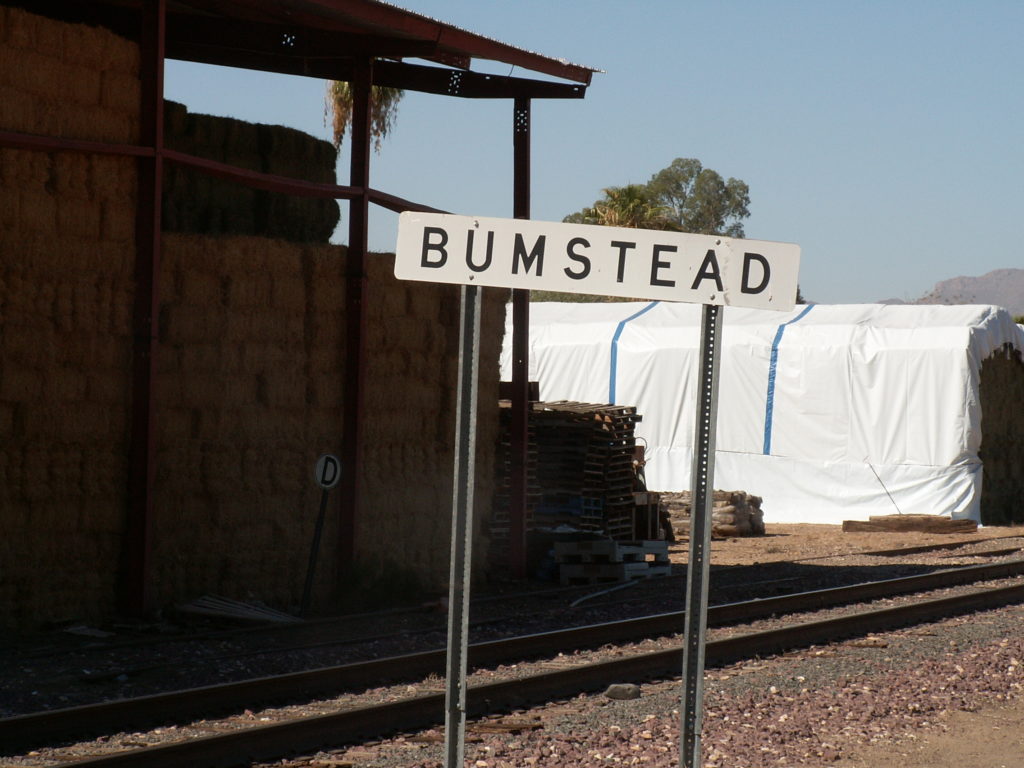
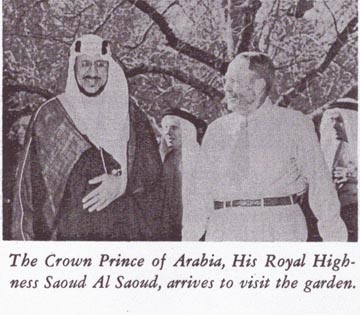
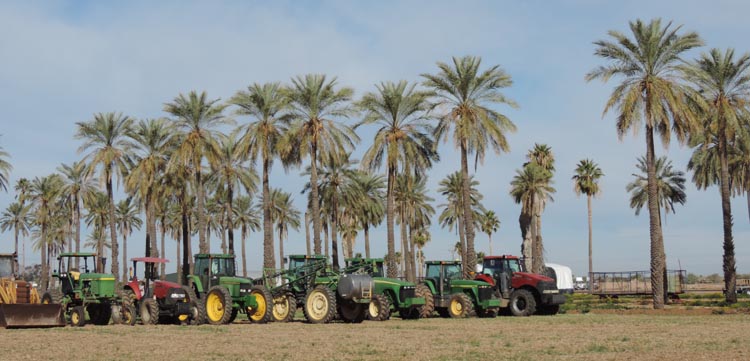

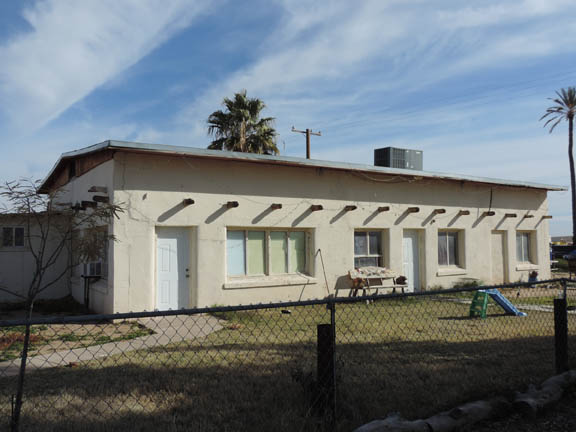
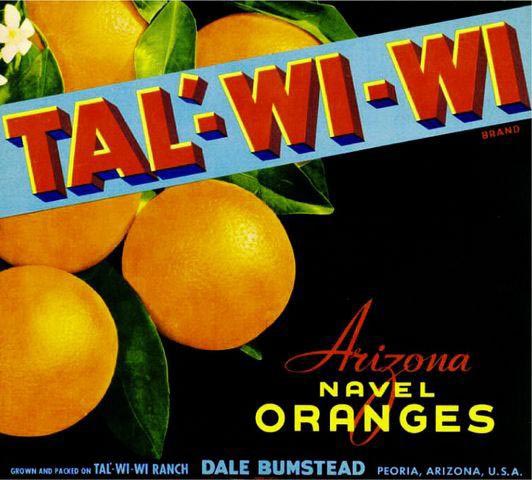
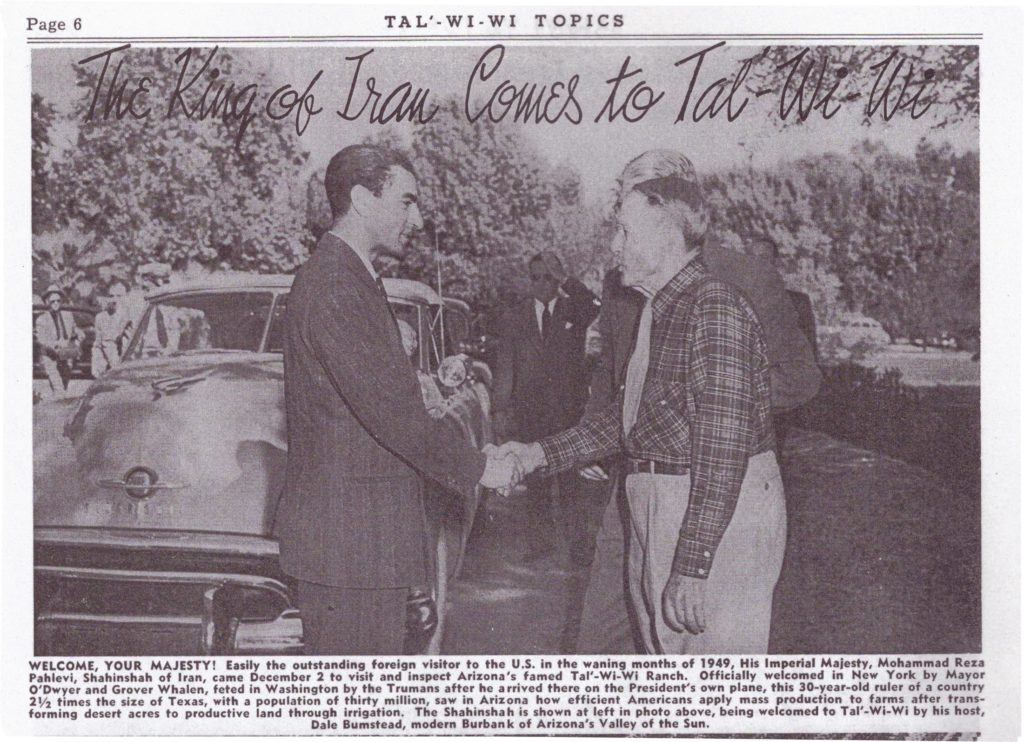
The Tal’-wi-wi Ranch property is scheduled to be sold for commercial development later this year. Our Historical Society is working to preserve the memory of Col. Dale Bumstead and all those who worked and lived at Tal’-wi-wi Ranch. If you or a family member has memories and photographs to add to our archive, we would encourage you to reach out to us at: Karen.k@lphsmuseum.org
